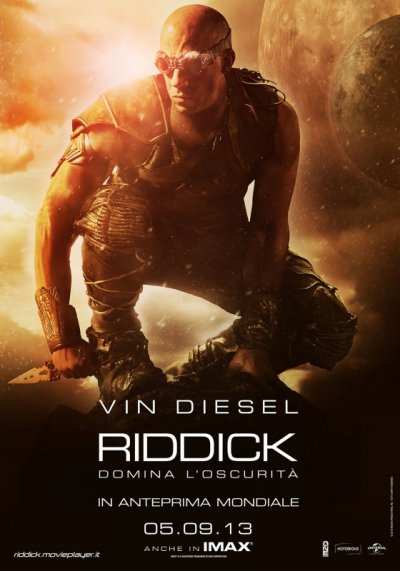Riddick (2013)

Riddick (2013): A Gritty Return to the Antihero’s Dystopian Realm

In the ever-evolving landscape of science fiction cinema, few characters have carved out a niche as indelible and intriguing as Riddick, the complex and captivating antihero at the heart of the Riddick franchise. The 2013 installment, simply titled Riddick, marks a triumphant return to the dystopian universe first introduced in the cult classic Pitch Black, solidifying the character’s status as a brooding, enigmatic, and utterly compelling figure.

Directed by David Twohy, who has helmed the entire Riddick saga, the film picks up where the previous entry, The Chronicles of Riddick, left off. Stranded on a desolate, sun-scorched planet, the titular character must once again rely on his heightened senses, raw survival instincts, and unbending will to overcome the myriad dangers that lurk in the shadows.

Vin Diesel, reprising the role that has become synonymous with his career, delivers a commanding performance that delves deeper into the psyche of Riddick, a character whose moral ambiguity and ruthless pragmatism have long been a source of fascination for audiences. Diesel’s ability to convey both the character’s primal ferocity and his underlying vulnerability is a testament to his acting prowess, ensuring that Riddick remains a compelling and multi-layered protagonist.

The film’s gritty, dystopian aesthetic is a natural extension of the Riddick universe, with Twohy’s direction effortlessly blending elements of science fiction, action, and horror. The harsh, unforgiving environment of the planet serves as a stark backdrop to Riddick’s struggle for survival, heightening the sense of isolation and the ever-present threat that looms over the protagonist.

In terms of narrative, Riddick is a refreshingly straightforward affair, forgoing the expansive world-building of The Chronicles of Riddick in favor of a more focused, character-driven story. The film’s plot revolves around Riddick’s attempts to summon a mercenary extraction team, setting off a deadly game of cat and mouse as various bounty hunters converge on his location, each with their own agendas and methods.
The action sequences in Riddick are particularly noteworthy, with Twohy and his team delivering a series of visceral, bone-crunching set pieces that showcase the protagonist’s formidable combat skills and his willingness to do whatever it takes to survive. The film’s creative use of lighting, shadows, and practical effects heightens the sense of raw, visceral violence, lending an authenticity and immediacy to the on-screen battles.
Beyond the film’s technical merits, Riddick also explores the deeper thematic underpinnings that have made the character so compelling. The film delves into the moral ambiguity that has long been a defining trait of Riddick, as he navigates the treacherous landscape of the bounty hunters and their competing agendas. The character’s evolution, from a loner driven solely by self-preservation to one who begrudgingly assumes a protective role over a young girl, adds depth and complexity to his arc.
Ultimately, Riddick stands as a confident and unapologetic return to the dystopian world that has captivated audiences for over a decade. Twohy’s direction, coupled with Diesel’s commanding performance, delivers a film that is both a thrilling science fiction adventure and a thoughtful exploration of the antihero archetype. For fans of the Riddick franchise, the 2013 installment is a welcome and satisfying addition to the mythology, cementing the character’s status as a unique and enduring presence in the world of cinematic science fiction.











